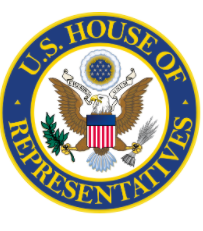Disclaimer: The following views are my own. They are not in any way associated with the views of the Member of Congress I worked for or their office.
This fall I had the honor of working at the House of Representatives as a Congressional  Intern in the office of my home district’s representative. This experience allowed me to develop various professional skills as well as to connect in a meaningful way with constituents and the issues that matter most to them.
Intern in the office of my home district’s representative. This experience allowed me to develop various professional skills as well as to connect in a meaningful way with constituents and the issues that matter most to them.
One of my favorite tasks was writing cosponsor memos which advised the Member and the Member’s staff on legislative action. These cosponsor memos outlined the function of the proposed legislation, its current support and opposition, and its district implications. It was here that the relationship between nationwide aspirations and district-based expectations were realized into actionable support.
In addition to cosponsor memos, our office responded to thousands of constituents who reached out. This meant that much of my time in this position was spent authoring form letters on various environmental issues. Topics of these form letters varied from justice for veterans who suffered health issues as a result of chemical exposure during time of service, to increasing the accessibility of recreational trails and protecting the National Environmental Protection Act under the coronavirus pandemic.
Campus Clarities and Congressional Complexities
Much of my time as a student at Bard’s Center for Environmental Policy (BCEP) has been spent learning about systems thinking and the interconnectedness of environmental and social issues. My time as a Congressional Intern solidified this belief. Addressing the environmental issues that are important to constituents illustrates their inextricable ties to social dilemmas.
The most outstanding of these issues include increased access to quality affordable healthcare so that veterans are able to receive disability benefits after being exposed to Agent Orange; better education so that communities can learn and share with each other; and access to leadership opportunities that support people who want to act on the issues that matter to them.

Something we focused on a lot in my first year of coursework at BCEP is that, not only are environmental issues inextricably linked but addressing them demands equally detailed solutions. For example, one takeaway from this internship was that when the Endangered Species Act protects predators like the Grey Wolf, farmers and ranchers risk their livestock because cattle and other farm animals are easy prey for these protected predators. While it is imperative to protect our valued endangered species, it is also crucial to support the farmers and ranchers who depend on livestock for their livelihood. That’s why programs like the Livestock Indemnity Program (LIP) are so important. This program provides partial compensation to farmers and ranchers who have had their livestock killed by animals that are re-introduced to the wild by the Federal Government.
The synchronicity between policies is imperative, and so examples like that of the Endangered Species Act and the Livestock Indemnity Program are useful learning tools for policymakers.
Water Rights and Wrongs
One of the other issue areas that I had the privilege of learning about in this position was water rights, which are very complex and at times tumultuous. In this region of the US, water is governed by prior appropriation. The doctrine of prior appropriation asserts that the first users (senior users) of water have the right to consume all of their rights. In contrast though, junior rights owners are able to consume so long as their consumption does not infringe on the rights of senior users.
Under increasing climate variability, water issues have become increasingly important. That’s why it’s crucial to learn about ways that people have successfully managed water and supported agriculture in periods of water scarcity.
Interestingly, there are ditch systems called acequias that pre-date the founding of the state and are managed collectively by multiple water users. I first learned about acequias doing my fall literature review where I studied Elinor Ostrom’s principles of common pool resources, and where I read a case study that analyzed acequias in the context of Ostrom’s principles. Further, during the BCEP Oaxaca intensive in January, my class and I learned a bit more about acequias, water management, and common pool resources.
During my internship, I have been able to meet with one of the field representatives in the office and learn more about acequias in the district, which has been incredibly helpful and has inspired me to write my thesis on acequias as drought tolerent social ecological systems.
I am very grateful to have had this experience, and in addition to a new suite of professional skills, I learned about compromise, integrity, and dedication from the Member, Congressional staff, other interns, and constituents. Moving forward in my career I am thankful to be able to take these skills and insight with me as I enter into the field as a policymaker.
